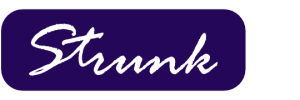Vendor Management Breakdown
Over the years, banking partnerships with FinTechs have grown in number and complexity. Third-party risk management has become a growing focus for supervisory and enforcement agencies in recent years. To facilitate the increase in such relationships, the Board of the Governors of the Federal Reserve System (Board), the Federal Deposit Insurance Corporation (FDIC), and the Office of the Comptroller of the Currency (OCC), have released a final joint guidance to assist institutions in mitigating risks linked with third-party relationships.
Although it is stated that the guidance does not have the authority to impose new requirements on banking organizations, each agency will still assess their supervised banking organizations’ risk management of third-party relationships as part of their regular supervisory procedures. This includes evaluating the level of risk and the effectiveness of risk management to ensure that all activities comply with relevant laws and regulations and are conducted in a secure and sound manner. The guidance also emphasizes that corrective measures, such as enforcement actions, may be taken by the agencies if there are any violations of laws and regulations or unsafe banking practices by the banking organization or its third party.
Strunk’s Vendor Manager software has undergone a review to ensure that it aligns with the Final Guidance for efficient management of third-party relationships. Strunk has proposed some areas of improvement to enable our clients to clearly outline the structure of each third party and identify potential risks, as well as the appropriate measures to manage them easily. With our latest release on September 6th, 2023, you can view the new upgrades that have been added.
Here, you can find a document comparing the Interagency Guidance of Third-Party Relationships: Risk Management with Strunk’s Vendor Manager software. https://app.strunkaccess.com/v2/document/347


